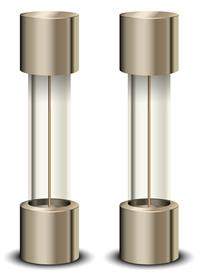
PUMPA - SMART LEARNING
எங்கள் ஆசிரியர்களுடன் 1-ஆன்-1 ஆலோசனை நேரத்தைப் பெறுங்கள். டாப்பர் ஆவதற்கு நாங்கள் பயிற்சி அளிப்போம்
Book Free DemoUsually, the wires in the circuits do not get hot very easily. But some elements used in the circuits easily get heated up. The filament gets heated in such a way that it starts glowing when it reaches a high temperature. When a large amount of current is passed through the wire, it becomes hotter than before. Such a high temperature can even melt the wire and eventually may break it.

Filament in the bulb
In the same electrical arrangement, four cells are placed instead of one cell, and a thin strand of steel wool is placed instead of a nichrome wire. When a large amount of current is passed through the circuit, the steel wire melted and got broken.
Electric fuse:
Some special materials that are used in wires melts quickly and break when a large amount of current is passed through them. Electric fuses in the electrical circuits use this type of special wires.
Electric fuse is a safety device that prevents electric fires or damage to electrical appliances due to excessive current flow.

Electric fuses
Fuses are inserted in the circuits that are used in the buildings.

There is a safety limit for the current to flow in the circuit. If the current exceeds this limit, the wire gets overheated and leads to fire. In this scenario, the fuse will blow off, and the circuit is broken. The safety device known as a fuse prevents the circuits from any damages occurring due to fire. There are different kinds of fuses used in the appliances for different purposes.
Important!
Never examine the electric fuse connected to the main circuit on your own. Always use a proper metal wire or strip in the fuse. Select the fuses according to their usage with an ISI mark on it.
Short circuiting and overloading:
The direct contact of wires leads to an overflow of currents in the circuits. This is due to the wear and tear of insulation on the wires, which eventually causes a short circuit.

Short circuit
When many devices are connected to a single socket, there will be an overflow of current, causing an overloading in the electrical circuit. These short circuits and overloads are very dangerous and can cause fire accidents.

Overloading the electrical circuit
Miniature circuit breakers:
Instead of fuses, Miniature Circuit Breakers (MCBs) are used nowadays. When the current exceeds the safety limit, the switches will get automatically turned off. It can be turned on again, and the circuit will be completed. Always use an MCB with an ISI mark on it.

Miniature Circuit Breakers (MCBs)
Effect of magnetism on electric current:
This experiment requires a cardboard, an electric wire, a cell, and a switch.

Experimental set-up
- A cardboard is taken from an old matchstick box.
- A small electric wire is wrapped around the cardboard.
- A tiny compass needle is placed inside the wire on the cardboard.
- The ends of the wire are connected to a cell through a switch.
- The direction pointed by the compass needle is noted.
- Now, a bar magnet is brought near the compass needle, and the switch is turned ON.
- The compass needle starts deflecting when the current passes through the circuit.
- When the switch is turned OFF, the compass needle comes back to its original position.
Inference:
The compass needle is made of a tiny magnet that points to the north-south direction at rest.
When the bar magnet is kept near the needle while the switch is in the off position, there is no deflection in the needle.
Whereas when a bar magnet is brought near the compass needle when the switch is turned on, the needle gets deflected.
This deflection can also happen when the current flows through the wire. Hans Christian Oersted noticed this deflection of the compass needle when the current was passed through the wire. The wire behaves like a magnet when current is passed through it. This is known as the magnetic effect of the electric current.